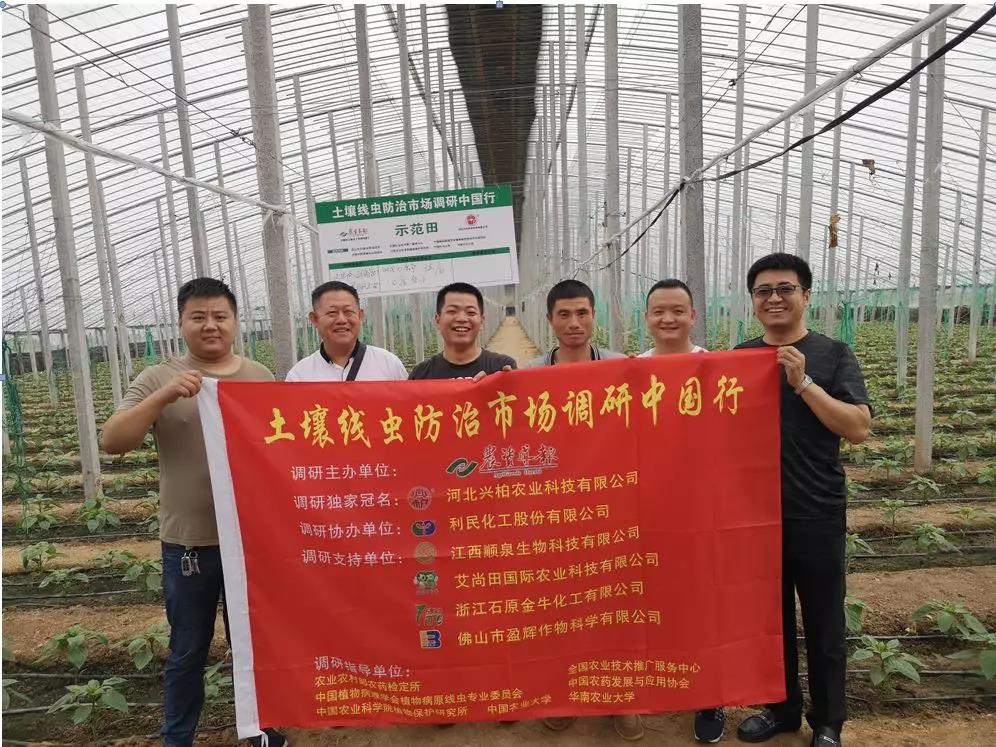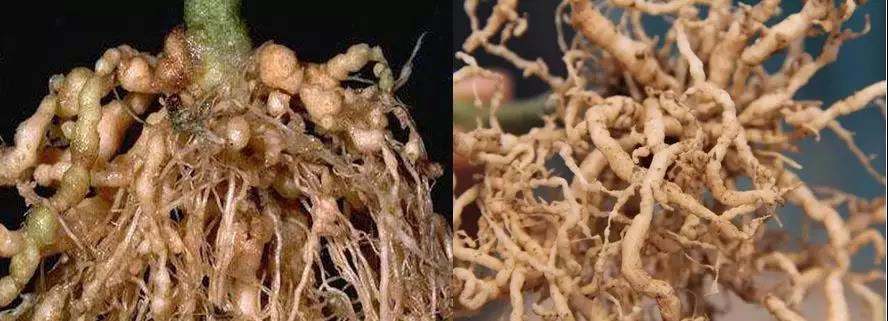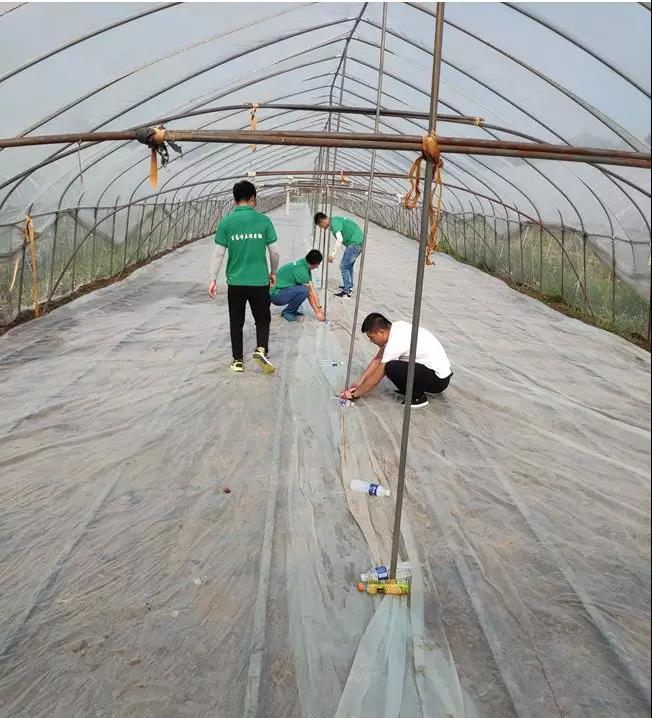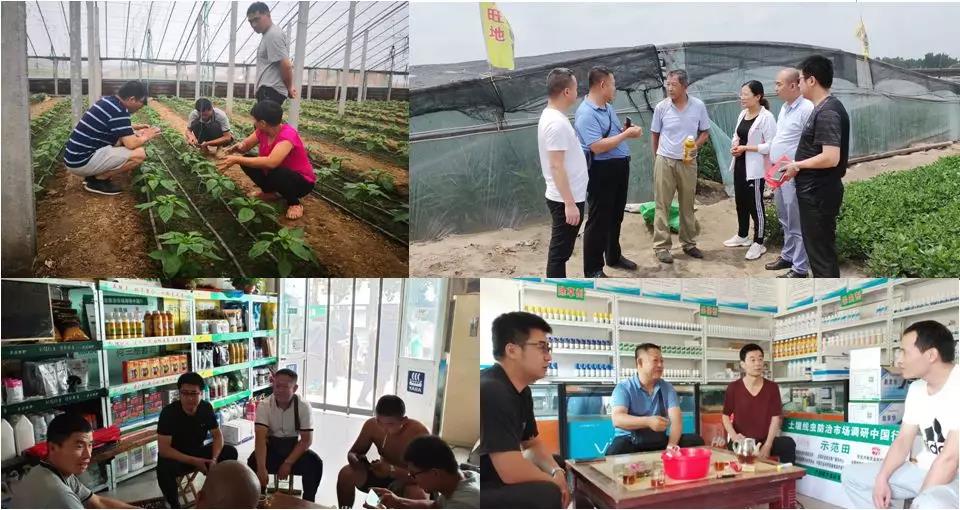It is understood that Shouguang has been planting solar greenhouse vegetables for 30 years. It not only realizes the annual supply of various vegetables, but also brings good economic and social benefits. However, the sheds are relatively fixed and replanted year after year. Unreasonable fertilization and other factors provide favorable conditions for the growth and growth of root-knot nematodes in the soil, combined with the incomplete treatment of nematode residues and the strong ability of root-knot nematodes to reproduce the number of greenhouses that are harmed by nematodes. It is also increasing. Land plots with lighter onset can generally result in a 10%-30% reduction in production, and a severe reduction in yields of 50-70% or more.
With the increase of planting time, root-knot nematode disease has become the main disease of greenhouse vegetables. The vegetables grown in the greenhouse can be harmed. The image of vegetable farmers is called “cancer” of vegetables, that is, greenhouse vegetables. Once root-knot nematode disease is acquired, it is more difficult not only to lose large and completely cure.

Root-knot nematode not only has strong reproductive ability and a wide range of hosts, which is the main cause of serious damage. Except garlic, green onion, leeks and other vegetables are basically not harmful, other vegetables such as melons, solanes, beans, most leaves All kinds of vegetables can be harmed, but the degree of harm is different. For example, the harm to pepper is lighter than that of melons. Now the damage on melon crops is the most serious and the loss is the biggest.
Prevention and control
Root knot nematode disease is a typical soil-borne disease. The short-distance transmission mainly depends on soil and running water. The long-distance transmission mainly relies on man-made. Therefore, the disease is important in prevention, and comprehensive prevention and control measures are needed to achieve the expected results.
Shouguang vegetable grows vegetables in the greenhouse for a long time and has many experiences. Therefore, in the prevention and control of root-knot nematode disease, comprehensive prevention and control measures are mainly adopted. First, agricultural control, physical control, biological control, etc. are selected, and serious plots are combined with chemical control. The root knot nematode disease is within the controllable range, and the damage caused by root knot nematode disease to vegetables is minimized.
1. Agricultural control: rotation, removal of sick, resistant varieties, resistant rootstocks, disease-free seedlings, improved soil, soilless cultivation, enhanced water and fertilizer management, etc., disease-free sheds should do a good job of protection, eliminate transmission In.
2, physical control: solar shed, flame disinfection machine disinfection.
3, biological control: the use of biological bacteria + solar sheds, biological agents.
4. Chemical control: chemical agents are used in the shed, before and after planting and in the growing season.
5, pay attention to prevent secondary infection of root knot nematodes.


Various crop nematode damage symptoms
There are ways to disinfect the shed
During the summer shack, Shouguang vegetable farmers use the method of solar disinfection combined with biological bacteria disinfection or chemical disinfection to control the root-knot nematode. After the shed, the suitable bio-organic fertilizer is added according to the shed conditions before planting. And biological fungicides, play a role in inhibiting root-knot nematodes and other soil-borne diseases, to improve soil and control the occurrence of pests and diseases from the source.
Which method is used to carry out the shed, mainly the vegetable farmers according to the specific conditions of their sheds, there is no root-knot nematode disease or dead tree phenomenon in the shed, at this time the vegetable farmers generally use the physical method shed-- The closed greenhouse film is made of solar energy for high temperature sheds. 10-20% of the farmers use this method every year; 30-40% of the farmers use the microbial method for sheds, which is also a new type of vegetable farmers who have been recognized in the past two years. The shed method; 40-50% of the vegetable farmers use the chemical method to shed the shed. Whether using the microbial method or the chemical method for the shed, they will be combined with the physical method. It is proved that as long as the regular product is selected and the operation rules are correct, no matter which one is used. The method will achieve better disinfection effect, generally when the vegetables or vegetables in the same year do not occur or less harmful.
1. Physical disinfection method
(1) Physical disinfection method - solar disinfection method
The soil is disinfected by the higher temperature in the summer shed, the vegetables are cleaned after harvesting, and the manure is used for about 10 m3 per mu, uniformly applied to the soil surface, and 2-3 times of ploughing and leveling (ground cover film) The effect is better), the greenhouse greenhouse film is used for high temperature sheds. After 15-20 days in sunny weather, the temperature in the shed can reach 70-80 °C, and the ground temperature at 5-10 cm in the soil can rise to about 50 °C. Kill most of the bacteria and eggs in the soil. It has the characteristics of green, environmental protection and energy saving.
The method has a poor killing effect on pathogenic microorganisms and pests in the deep soil, and can be used in greenhouses with new greenhouses and soil-borne diseases. If the number of pathogens in the greenhouse is large, it is recommended to use other methods in combination.
(2) Physical disinfection method - flame high temperature disinfection method: is to use a flame disinfection machine to burn liquefied gas in the process of rotary tillage, heat the soil within 30 cm to reach the temperature at which nematodes and other pathogenic organisms die, completely killing Nematodes and other pathogenic microorganisms (such as time allowed to be combined with solar disinfection for stagnation).
In order to make the disinfection effect better and longer, it is recommended to use it with microbiological prevention and control measures. The method is not only green and safe, but also saves labor and time. On the same day, the soil is disinfected. On the second day, vegetables can be planted, and it is not particularly restricted by seasons and mouthwashes, and is particularly popular in production.
2, biological bacteria disinfection method
Biobacteria disinfection is a method of soil disinfection using a combination of biological bacteria and solar energy.
Biological bacteria plus organic materials (organic fertilizer or manure or straw or bran, etc.) for shacking: After the front stalks are cleaned or the straw is returned to the field, the composite biological bacteria + organic materials are used to treat the soil, and the composite organism can be selected per acre. Bacteria (use according to product requirements) plus organic fertilizer 1 ton or manure 10m3 and other organic materials, evenly spread to the soil surface, ploughed and leveled, each shed north and south from a ridge, east-west covered white transparent film (two At the junction of the film, the film can be combined by spraying water.) The water should be filled until the soil moisture is saturated, and the closed film can be shackled for 20-30 days (after a fine weather of 15 days). After drying the soil for 5-7 days, the seedlings will be planted in the whole place, and the biological bacteria will be supplemented before and after planting.
Advocating the returning of straw to the field not only improves the soil environment, but also saves labor, labor, and money for the vegetable farmers. It also solves the problem of straw pollution, is conducive to the sustainable development of the vegetable industry, and achieves a win-win situation between economy and ecology.
3. Chemical disinfection method
Chemical disinfection is the method of using soil chemicals for soil disinfection.
(1) Disinfecting agent disinfection method: When the vegetable farmers in Shouguang area use the killing agent, they use the Weibaimu and calcium cyanamide to fumigate the soil. After use, they have the effects of disinfection, pest control and disease prevention. However, different medicines are used in different ways, and must be scientifically and rationally used according to the instructions for use of the medicine to achieve the purpose of high efficiency, safety and environmental protection.

Weibaimu fumigation shed
(2) Ordinary agent disinfection method: If the shed is closed for a short period of time, the root knot nematode disease is more serious, and thiazophos can be used for full application or ditch application. This method of soil disinfection is not limited by time and can be carried out at any time. However, if the number of pests and diseases in the shed is large, the effect is not good, and if the amount of thiazolyl is too large, phytotoxicity can occur, so the vegetable farmers generally follow the actual situation in their own shed. This method is used when changing vegetables in the winter and spring seasons.
Before and after soil disinfection, it is necessary to pay attention to the following matters: Before the soil is disinfected, it is necessary to adjust the soil temperature and humidity well, and pay attention to the use of intact film to cover the soil, so as to ensure the desired effect. After the soil is disinfected, the key is to prevent the secondary influx of root-knot nematodes. Therefore, the seedlings required to enter the shed should be disease-free and strong seedlings, and the agricultural operators must also be allowed to enter and exit the shed aseptically. Add beneficial microbial agents to allow the beneficial bacteria to multiply in the soil to inhibit the reproduction and harm of root-knot nematodes, and select Bacillus lentus, Paecilomyces lilacinus, and Bacillus cereus to inhibit root-knot nematodes.
Combination drug technology is key
Shouguang's main crops are affected by nematodes, such as tomatoes, melons, cucumbers, loofah, bitter gourd, carrots and beans. In particular, melons are more serious, so high-efficiency and low-residue pesticides are often used in the prevention of root-knot nematode hazards. The products used in the meeting include the Xingbaike line of Hebei Xingbai, Lufuda of Bayer crops, and thiazolyl of Hebei Sannong. (does not include soil fumigation treatment)
The soil fumigation treatment is mainly the use of Jiangsu Limin, Shenyang Harvest and Zhongnong United's Weibaimu, as well as the biological bacteria shack. Weibaimu shacks are mostly applied at a dose of about 40 kg per mu. The biological preparation pots are also used in different doses depending on the species.
Tomatoes: Nematodes are less harmful, and the control is relatively simple. The application of 10% thiazolyl granules is 1000-1500 g per mu. Two months after planting, apply 1-2 kg of Xingbaike line or 1-2 sets of Xingbai Shuanglong knife (Xingboike line and thiazole phosphine set)-mu or Lufuda 100 ml/mu , planting the whole season can be used once
Melon, cucumber, loofah, bitter gourd: The damage of nematodes to melons is very serious. The period of melons is long and the damage of nematodes is relatively large. 10% thiazophos granules or avermectin·thiazolyl granules 2000- per mu of crypts are applied. 2500 grams of rotary tillage into the ground, control drugs from the seedling period, after half a month of planting, the second flush, the per-mu drip irrigation with 2-3 kilograms of Hing Boke line, Lu Fuda 1-2 bottles 3 sets of Hebei Xingbai Shuanglong Knife and 2-3 bottles of Zhongxun 20% Thiazole Phosphine Water Emulsion. The second drug can be used to control soil nematodes every 50-70 days according to the planting cycle.
Carrots: In recent years, nematodes have been found to be less harmful, so the control is relatively simple. Apply 10% thiazolyl granules per 1000 mu of thiophene granules or 3000-5000 g of avermectin granules per hectare. One set of Bai Shuanglong knife or one bottle of 500ml thiazolyl can be used in a small amount throughout the growth cycle.
Beans: In recent years, leguminous worms occur more widely, and beans are more sensitive to pesticides. Thiazolidine is less safe. The basic application of the hole is that there is no need to use the drug. One kilogram or Lufuda can be controlled.
According to the prevention and control situation in recent years, the most effective ones are thiazophos (differentiated according to the specification content), Xingbaike line and Lufuda. The actual application effect is that the matching effect of thiazolidine and Xingbike line is relatively Ideally, the duration of thiazole phosphine is longer, the speed of Xingbike line is better, and the safety is very high. Therefore, the reduction of thiazolyl phosphine with the Xingbaike line will be better, and the effect of Lufuda is also ideal, but The biggest problem is that Lufuda liquid does not move in the soil, so the control effect on the crops with serious damage to the nematode is not ideal.

Contact: Mr. Ma
Phone: +86-0374-5699688
Tel: +86-0374-5699688
Email: [email protected]
Add: Fine Chemical Industry Park, Jianan District, Xuchang, Henan, China